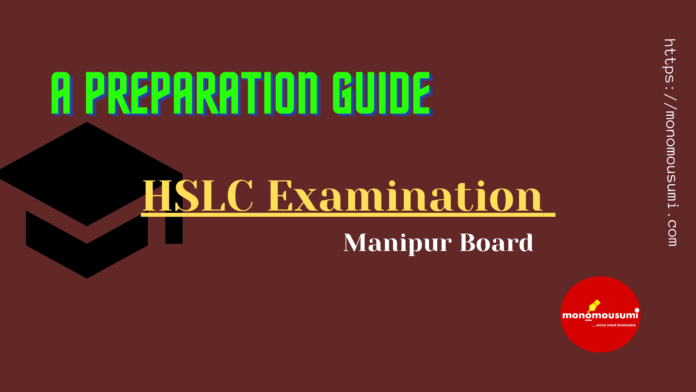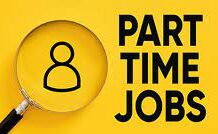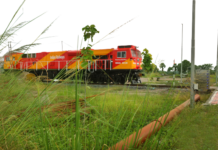Examination is a formal test to test the knowledge and capabilities of the students. Moreover, it is a test for test-takers knowledge, skill, physical fitness, and aptitude. It is a form of learning activity where students can learn from their mistakes. It is a chance for students to identify their weaknesses and correct them. Formally, it is a test for students to pass them to the next level or the higher classes. As per the historical context, the culture of conducting examination began way back in 605 A.D in China by the Sui dynasty. It was just a standardized form of test implemented for the royal society but not for the commoners. In modern times, exams were introduced by Henry Fischel, an American businessman and philanthropist somewhere in the late 19th century. Ever since then, the culture of conducting began and implemented in various sectors of education. However, this essay is mainly concerned about one particular academic examination.
High School Leaving Certificate Examination (HSLCE) is a state level examination conducted by the Board of Secondary Education Manipur (BOSEM). It is also commonly known as 10th board exam. BOSEM was established in 1972 by an Act of Manipur Legislative Assembly and it controls, organizes and conducts examination for all schools which are affiliated by the Board. It is conducted once in a year. Every year the examination is conducted in the first week of February and concluded the examination in the last week of March (including practical examinations). BOSEM always aims to finish the main papers of the examination before the Yaoshang Festival (Holi in Manipur) as it is a festival mostly Meitei(s) and especially young boys and girls never want to miss.
HSLC Examination is a very important examination for young aspirants and to crack this exam in the first attempt, certain guidelines have to be followed like any other competitive examinations. It is a training for students to teach them discipline while facing any exam and tests in their life and to explore and express their ideas and knowledge openly. Reading and studying are the primary methods of preparation. Besides, one needs to follow the trends and guidelines sanctioned by the Board. One can score good marks if they follow these patterns primarily while preparing for the examination. One needs to analyze these trends strictly if they are planning to aim for holding a position besides studying and working hard all year long. All theirs yearlong hard work will go into waste if they do not follow the guidelines properly. As it is a state-level examination where lakhs of students are participating and competition is at a very high level, unlike school examinations.
HSLC EXAMINATION also follows some important trends like any other competitive and academic examinations. The examination is for 100 marks. The markings are divided into external (80) and internal (20). In the subsequent paragraphs we will talk about it in detail. The respective trends include- syllabus and weightage of marks, questioning pattern, recommended books, cut off marks and so on.
Syllabus: For this examination, subjects have been broadly divided into main papers and optional papers. The subjects under main papers include –Science, Social science, Mathematics, and General English. Students appearing HSLC Exam cannot fail in any of these subjects for them to graduate. And the subjects under optional papers include- Computer Science, Higher Mathematics, Home Science, Commerce, Fine arts, Thang-ta (indigenous martial arts of Manipur), Esei-nongmai (Music), Manipuri-jagoi (Dance). The last three subjects includes practical examination and which are held after the completion of the main papers. The First Language papers are also included under optional papers. The subjects include-Manipuri (main local dialect of Manipur), Bengali, Nepali, Hindi, Sanskrit, and some local dialects of major tribal inhabitants namely Gangte, Hmar, Kom, Liangmai, Mao, Mizo, Paite, Simte, Tangkhul, Thadou Kuki and Vaiphei Zou. However, subjects in place of First Language include- Additional English, Elementary Hindi, Elementary Manipuri and Elementary Manipuri (RS).
Design of question: The question paper of HSLC Examination is designed in a systematic manner designed in such a manner that all students- poor, average, and brilliant can answer. The questions are designed on three levels based on the level of difficulty which is as follows
Difficulty – 20%, Average -50% and Easy – 30%’.
Questioning and answering pattern: The pattern of questioning follows some objectives. The objectives are as follows –
Knowledge (K) – 14 marks – 20%
Understanding (U) – 28 marks – 40%
Applications (A) and Skill (S) – 38 marks – 40%
However, there is no strict rule to be followed for answering but students must answer the questions according to the marks allotted.
Methods to prepare: There is no hard and fast rule for preparation of the examination like UPSC or any other competitive examinations. The best and only method to prepare for the examination is studying and analyzing the prescribed textbooks thoroughly with core understanding. As questions will be asked based on the above four objectives and questions may be asked any related to the topic.
Recommended or reference books: There are no limitations regarding the use of reference books. Students can refer to any reference book available in the market as the syllabus of all main paper subjects is the same as the syllabus of CBSE except for lingual and arts and cultural subjects. They may refer these books only for their extra knowledge apart from the prescribed textbooks. But from the examination point of view they need to focus mainly on their textbooks and the question banks for previous years’ with answers which are prescribed by the Board.
Cut off marks: The cut off marks are 33 and students need to secure 33% marks (including theory and practical or internal assessment). The mark distribution and cut off marks of external and internal marks assessment are as follows –
External mark assessment: Theoretical marks for 80, the cut-off mark is 28 while for practical based papers the cut off mark is 21 out of 70 (plus 10 marks from practical)
Internal mark assessment: There are no strict cut off marks for this assessment and these marks are based on the students’ attendance, behavior in the school, and conduct of merit in school examinations.
If a candidate for HSLC Examination is fully aware of the above trends, then they are half prepared for the examination. There are two forms of preparation; one is before the examination and the other one is during the examination. Only studying and preparing well does not always bring good marks. Apart from studying they should know some exam techniques too. They should know how to manage time and interpret the same answer for different questions. Most importantly, they should never feel nervousness during the exam or while seeing any doubtful questions.
Examinations have always been quite stressful for students. Some regard it as a curse. However, they must notice that examinations compel us to work hard and to identify our weaknesses and correct them. It plays an important role in the process of learning and in shaping one’s future. It is a great way to access what they have learned with regards to, particularly subjects. So, it should not be regarded as a curse or boredom. They need to take it with positive affirmations but at the same time, they shouldn’t take it lightly. They can do mental and physical exercises to enhance their confidence. As for an instance, they can do some front bending yoga exercises to increase their memory power, eating healthy foods to boost their immunity, sufficient and sound sleep for 7-8 hours, etc. Moreover, mental exercises include regular revision and writing practices. These exercises during the few months before the exam will help them in ignoring exam fears and nervousness in the examination hall. At the same time, it will help them in scoring good marks. But for those students who started studying when the exam is near, studying and memorizing some suggestions and important notes are enough for them to pass the exam. The last note of this essay will be by saying that whatever may be the situation students should never use unfair means. As it is like cheating on the self.
By THANGJAM PINKY CHANU, IMPHAL

















Good
Good essay
Woww nice essay, a simple and meaningful one
nice